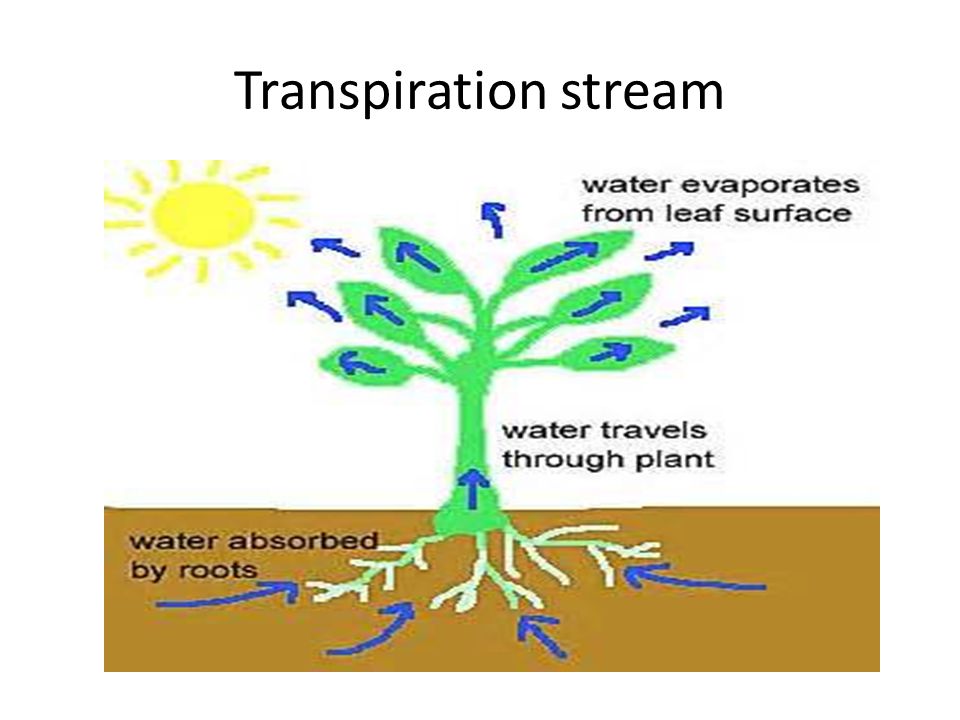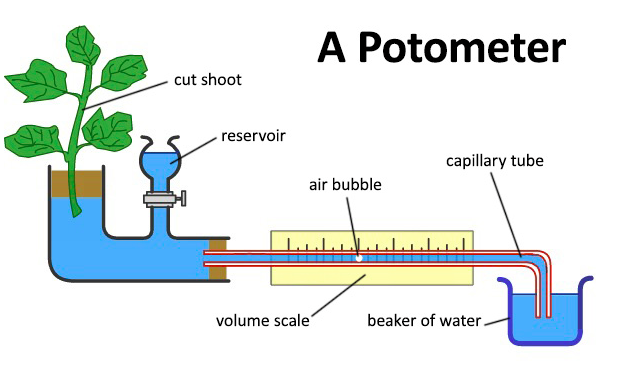Transpiration
What Is Transpiration
Transpiration is a method of transporting fluids (water and minerals) around and out of the plant. Water that is found on the surface of these evaporates and leaves the leaves by diffusion. Water is then drawn out of the xylem cells within the leaves to replace water lost by this evaporation, as the leaves need water in order to photosynthesize. The xylem cells form continuous tubes down to the roots and, as water is lost from the leaves, more is drawn up from the roots. Transpiration is continuous and so there is a slow but continuous flow of water through the xylem tubes.
Leaves have a lot of small holes underneath, allowing gases to diffuse in and out. The hole is called the stomata. There are two guard cells around the stomata, and that changes shape in order to allow the gases to diffuse in and out. The stomata is usually open during the day and closed during the night, as photosynthesis can only take place during the day time.
Environmental Factors
If the rate of transpiration increases, then the root will absorb more water from the soil. The follow are a few environmental factors that can affect the rate of water uptake by a plant.
- When the temperature increases, more water will evaporate from the cell surface. This increases the rate of diffusion of water from the leaf.
- When there is low humidity, there is less of a concentration off water on the outside of the leaf. This increases the rate of diffusion of water from the leaf.
- When there is more air movement, water vapor is removed more quickly on the leaf surfaces. More water will diffuse off the surface.
- When the light intensity is higher, the rate of photosynthesis increases. The stomata will then open up so that water can diffuse out of the leaf.
Rate Calculations
The rate in which transpiration takes place can be measured by looking at either the decrease in mass of the plant due to water loss, or by looking at the volume of water that is absorbed. A potometer can be used. When the water moves through the plant as it is absorbed, the air bubble will move along the scale. This will allow you to measure the transpiration rate.
Translocation
Translocation is the name of the process when sugars are transported in the phloem. This is an active process. The phloem contains living cells, and its structure is made of sieve tubes and companion cells. Sieve tubes are needed for transport, and have no nuclei. Companion cells are attached to sieve tubes in order to provide energy for translocation. Sieve tubes and companion cells must work together in order for translocation to be successful.
- Is Translocation an active or passive process?
- Active
- What is the role of the stomata?
- Your answer should include: Water / Gas / Gases / Diffuse
- What controls the size and shape of the stomata?
- Your answer should include: Guard / Cells

